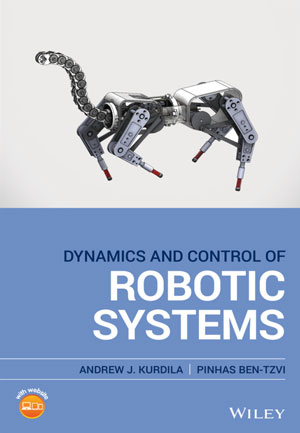
出版时间:2019.10
官网链接:Wiley
下载地址:百度网盘(PDF+EPUB)
提取码 :7mym
内容简介:
DESCRIPTION
A comprehensive review of the principles and dynamics of robotic systems
Dynamics and Control of Robotic Systems offers a systematic and thorough theoretical background for the study of the dynamics and control of robotic systems. The authors—noted experts in the field—highlight the underlying principles of dynamics and control that can be employed in a variety of contemporary applications. The book contains a detailed presentation of the precepts of robotics and provides methodologies that are relevant to realistic robotic systems. The robotic systems represented include wide range examples from classical industrial manipulators, humanoid robots to robotic surgical assistants, space vehicles, and computer controlled milling machines.
The book puts the emphasis on the systematic application of the underlying principles and show how the computational and analytical tools such as MATLAB, Mathematica, and Maple enable students to focus on robotics’ principles and theory. Dynamics and Control of Robotic Systems contains an extensive collection of examples and problems and:
- Puts the focus on the fundamentals of kinematics and dynamics as applied to robotic systems
- Presents the techniques of analytical mechanics of robotics
- Includes a review of advanced topics such as the recursive order N formulation
- Contains a wide array of design and analysis problems for robotic systems
Written for students of robotics, Dynamics and Control of Robotic Systems offers a comprehensive review of the underlying principles and methods of the science of robotics.
ABOUT THE AUTHOR
ANDREW J. KURDILA, PHD, is the W. Martin Johnson Professor of Mechanical Engineering at Virginia Tech. He is the author of Structural Dynamics: An Introduction to Computer Methods from Wiley.
PINHAS BEN-TZVI, PHD, is Associate Professor of Mechanical Engineering at Virginia Tech. He has expertise in robotics and autonomous systems, bio-inspired robotics, mechatronics, control systems, robotic vision, human-robot interaction, machine learning, and more.